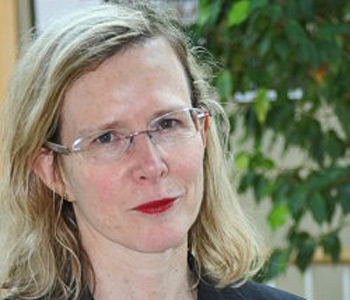Ruth DeFries
What Would Nature Do? A Guide for Our Uncertain Times
Columbia University Press
264 pages, 8 5/8 x 5 3/4 inches
ISBN 978 0231199421
What Would Nature Do? is unabashedly human-centric. It is about strategies that humans—the big-brained, ingenious animal that we are—can learn from nature’s experience to improve our prospects of prospering on this dynamic planet.
Both life on earth and human civilization are complex systems, meaning that when they are perturbed the repercussions ripple through the system in unpredictable ways. In our modern hyper-connected civilization, as we have seen in this pandemic, for example, a tiny virus in an obscure market can ricochet around the world and bring down the global economy. In nature, when oxygen-producing plants evolved two-and-a-half billion years ago, life could have been doomed. But new forms of life flourished—sponges, corals, and jellyfish followed by insects, reptiles, dinosaurs, and mammals. Life has persisted through asteroids crashing into the earth, wild swings in climate, extinctions, and diseases.
The book’s premise is that nature has a lot more experience than humans do with surviving potentially disastrous, unpredictable shocks. Without intent or pre-planned design, the process of trial-and-error in evolution has led to some key strategies. These strategies might have some applicability to our complex human-created world. As I was researching for the book, I came across many examples where engineers, investors, and businesses have learned that these strategies help their prospects of survival, although they were probably unaware that nature already uses these strategies.
These strategies are: built-in, self-correcting features, a stabilizing strategy pervasive in nature and adopted by the stock exchange to catch a free-falling plunge in the market; diversity, the hallmark of both financial investors and the natural world, to buffer against an unknown future, keep options open, and safeguard valuable knowledge and ideas from coalescing into a homogenous stew of culture, cuisine, and ways of viewing the world; the architecture of ubiquitous networks, patterned on tiny veins in a leaf, to keep the flow of goods, food, information, and ideas safe from cascading failure and, conversely, to prevent lethal diseases from spreading; and leaders who enable decisions based on bottom-up knowledge of local conditions, the way ants and termites build their fabulous structures, rather than top-down impositions from faraway authorities that inevitably backfire. These are nature’s time-tested tactics that maintain life through unknown future.
The motivation for the book comes from the uncertain future that faces humanity. The twentieth century, as I wrote in my previous book, The Big Ratchet, was an extraordinary time of great technological feats. Human ingenuity figured out how to produce copious amounts of food, extract abundant energy from long-buried dead plants and animals, extend life-expectancy, reduce infant mortality, and bring many people out of poverty. We have been lulled into complacency that any problem humanity might face has a technological and efficient solution.
The twenty-first century is proving otherwise. Human societies have never before been as urbanized as today, with more than 70% of the world’s population predicted to live in cities in the coming decades. This urbanization makes us all more intertwined and dependent on faraway places than ever before. Our highly connected world is a new way of living for our species, as big a transition as when people started to farm rather than hunt and forage about twelve thousand years ago. Moreover, climate change brings another layer of uncertainty with unprecedented fires, storms, pests, and unforeseeable outcomes.
As a collective human society, we have no manual or roadmap to navigate this uncertain world. The twentieth-century notion that ever-more efficient ways to produce food, pump water, and get other resources is proving to be a dangerous path. Because the world is so interconnected, human society is more vulnerable to shocks in our food system and disruptions in supply chains.
With these ideas in mind, I started writing this book more than five years ago. I had no inkling that, just at the time I was sending in the final manuscript, the world-changing pandemic would prove the point that human civilization is indeed very vulnerable. And now we can see very clearly that our human institutions are not up to the task of dealing with such unexpected events.
The book has separate chapters for each of the four strategies. My favorite chapter is the one about the fourth strategy, titled “One Size Fits No One.” It’s about how nature deals with collective action when a task is too great for a single individual.
Nature’s solution rests on each individual following rules based on its local surroundings. No blueprint or mastermind is required. The strategy gives rise to zebra stripes, ant trails, and termites’ architectural marvels. No central command is directing traffic or commanding the ants and termites where to march or what to do, despite the “queen” misnomer.
In human societies, collective action comes into play in rules and institutions to share water, make laws, trade, and nearly every aspect of organized society. Top-down, central authority with someone setting the rules seems like the logical way to organize society. But nature’s experience suggests otherwise. Bottom-up solutions, organized and implemented by people closest to the ground and the most interest at stake, are messy but can be more effective in the long run than top-down control from a distant authority.
The reason I like this chapter is because the person who brought these ideas to light, although without reference to zebra stripes and ant trails, was about 5 feet tall, treated everyone like she was their grandmother, and went head-to-head against late twentieth-century conventional dogma. The notion of the “tragedy of the commons” dominated development circles and resource managers at the time, inspiring central control and top-down regulations to manage forests, fisheries, and other resources. Elinor Ostrom countered that people can effectively manage their own affairs if given authority and information. Based on decades of on-the-ground work, she showed many examples, from decentralized community policing to water management, where people self-organize. Ostrom won a Nobel Prize for her path-breaking work and died at the age of 78 in 2012.
My aim for the book is to give people some different, perhaps non-intuitive ways of thinking about how we organize ourselves as human societies. I do not mean to be prescriptive and pronounce what “should” or “must” happen. Rather, by thinking about the potential parallels between the two complex systems—nature and human civilization—we might be able to integrate some time-tested examples from nature into our human-constructed institutions.
We live in a time when many people are anxious about the future. Of course, the pandemic is very anxiety-producing. But even without the pandemic, with climate change, political upheavals, and blatant displays of the social inequities that the twentieth century created, people might welcome new ways of viewing the world.
Inventors and architects have highlighted many wonderful examples of biomimicry, such as Velcro inspired by burr spikes and cooling towers pattered on termite mounds. The strategies discussed in the book are more at the level of systems. That means an individual alone can’t unilaterally act on these strategies. A single person cannot build a seed bank, save dying languages, or build redundancy into the global food trade network. I’m afraid this book will not satisfy those who want answers to what they can do individually.
But everyone can be part of a society who chooses its leaders and contributes to decisions about its priorities. We can embrace those leaders who think beyond short-term efficiency, appreciate the power of bottom-up organization, and otherwise might work to implement the strategies from nature that apply to human societies.
When I was researching the examples and stories for the book, I was struck by how many times people have learned through trial and error that nature’s strategies pay off. Most of those examples relate to finance, where portfolio diversity and redundant supply chains are clearly in the interest of stakeholders. But even some examples at a more systems-level, such as the 100-year U.S. Forest Service’s backtrack on Smokey Bear’s message that all fires are bad, show the power of human ability to learn and adjust.
I hope that this book brings optimism and hope that inevitable disruptions need not lead to disaster if society builds nature’s time-tested strategies into its human institutions.




We don't put paywalls. We don't distract you with ads. We don't sell your data.
Please help to keep this running!